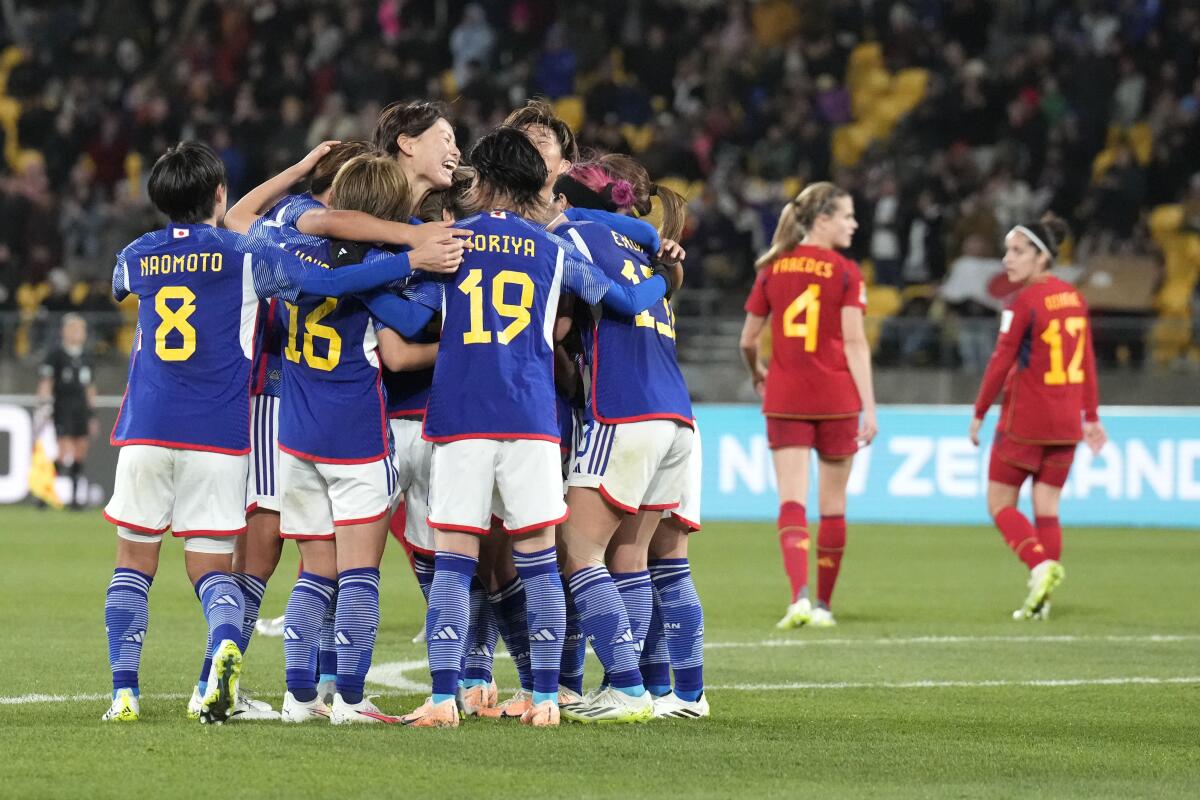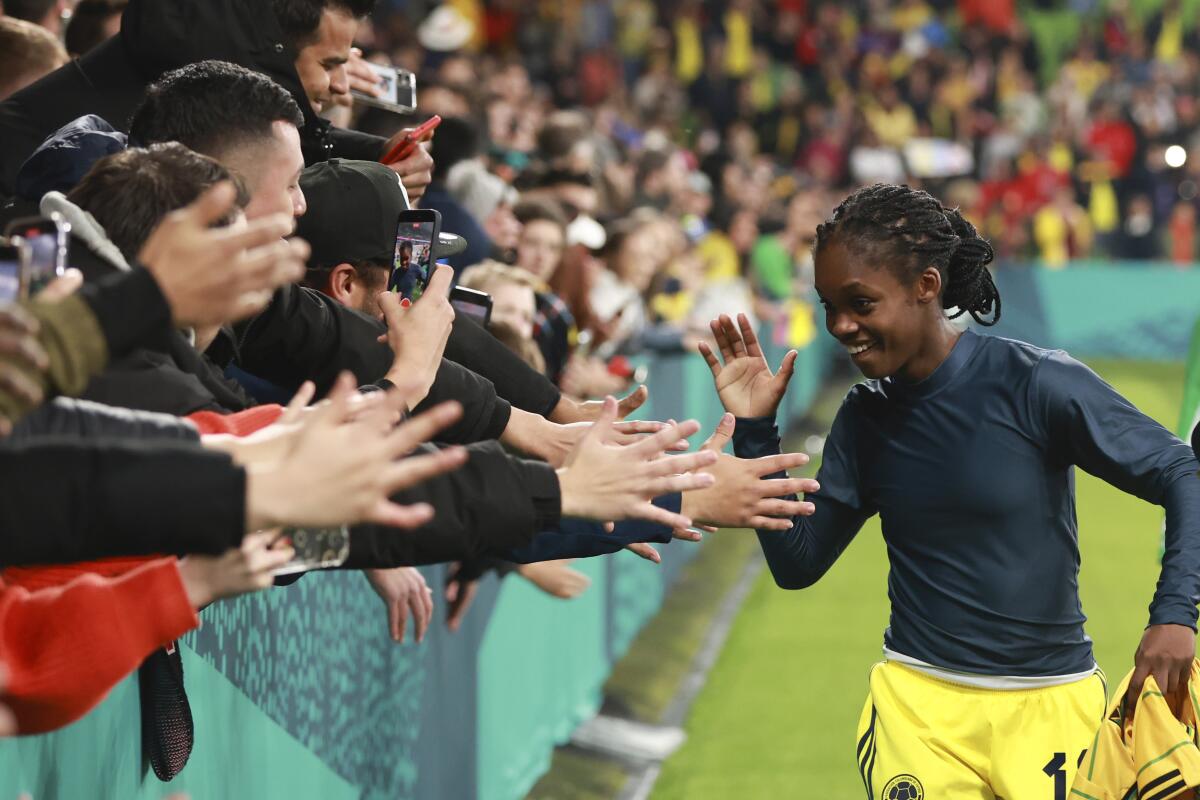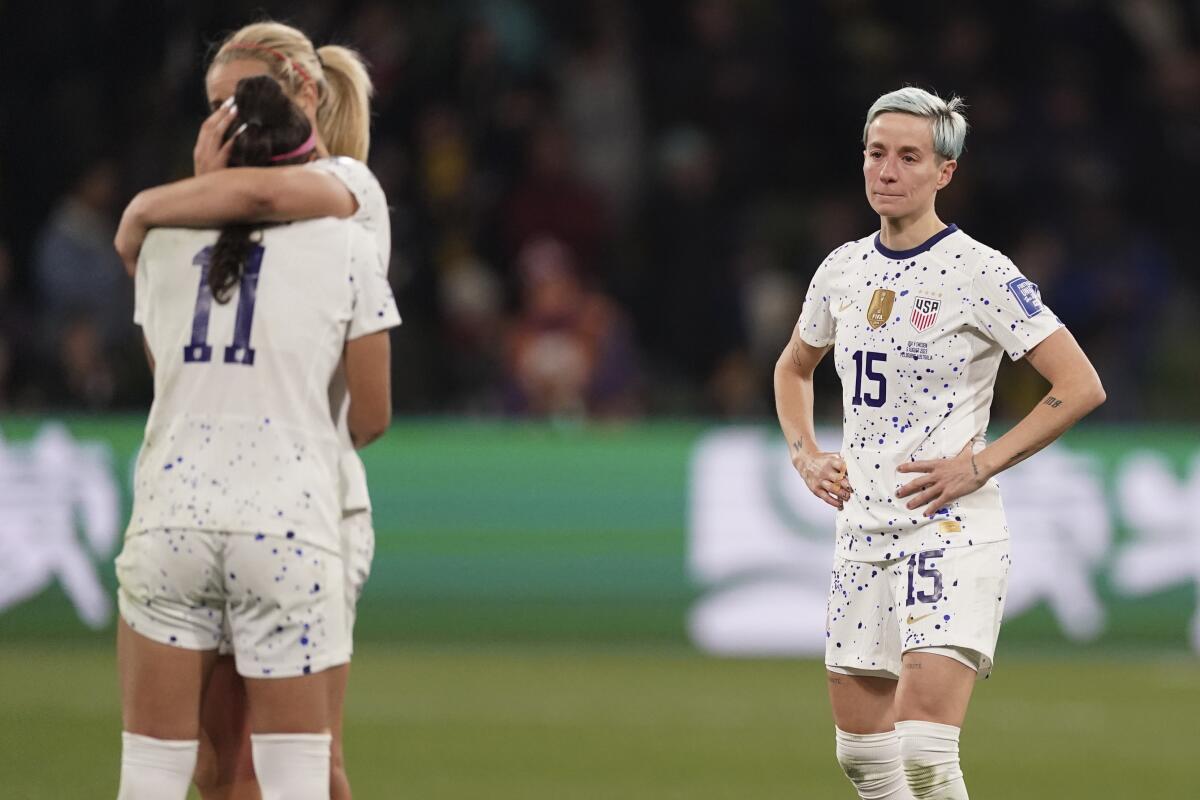Who will win the World Cup? Japan is the favorite, but others may surprise

- Share via
AUCKLAND, New Zealand — Women’s soccer passed into the future in this summer’s World Cup. Going forward, the game will always be talked about in terms of two eras: before 2023 and after.
It’s not simply that this tournament has been the most competitive and best-played in history — though it certainly has been that. It’s not simply that this tournament has had no favorites and no underdogs — though that certainly is true as well.
When the quarterfinals kick off Thursday evening, Pacific time, four of the world’s top eight teams will not be there. No. 2 Germany, No. 7 Canada and No. 8 Brazil didn’t make it out of the group stage, with all three falling to teams ranked outside the top 24. The top-ranked U.S. made it just one game further, bowing out in the round of 16. The Americans, once miles ahead of the rest of the world, lost by a millimeter, exiting short of the semifinals for the first time ever.
This is the summer in which the minnows became sharks.
Nigeria took England, the reigning European champion, to penalty kicks before being eliminated. Morocco, a World Cup debutante ranked 72nd in the world, made it to the second round, as did Jamaica (No. 43), whose goalkeeper, Rebecca Spencer, did not give up a goal until the second half of her fourth game, a scoreless span of more than 5 hours and 20 minutes.
Colombia, which won that game, also won its group by beating Germany and will play in the quarterfinals for the first time. It is the lone team from the Americas to reach the final eight.
But that’s not the only reason why this World Cup marks the end of the past and the start of the future. The tournament has already drawn a record 1.53 million fans with eight games still to play. (There have been 56 matches played in this World Cup, four more than the previous high, which has contributed to that record. The average attendance of more than 27,000 per game ranks third all-time.)
The fan fests, staged for the first time at a women’s World Cup, have attracted a half a million more people in the 10 host cities in Australia and New Zealand and FIFA is predicting the global TV audience will top 2 billion, helped immensely by the 53.9 million Chinese viewers who watched their team play England in the group stage.
And in some ways the competition is just beginning. Only eight of the 32 teams that started the tournament are still here; by the end of the weekend, that number will be down to four. Let the games begin.
The favorites

Six of the eight quarterfinalists — Japan, Sweden, England, France, Australia and the Netherlands — have been here before with Spain and Colombia reaching the final eight for the first time. But of those six, only Japan has ever won the tournament.
And the Japanese would be a good bet to win again. They have the most technically adept team in the tournament, they’ve scored the most goals with 14 and have conceded just once in four games. Japan, which has won all four of its games by at least two goals, also has the tournament’s leading individual scorer in Hinata Miyazawa and teammate Mina Tanaka is tied for the most assists with three.
Their quarterfinal opponent is Sweden, which eliminated the U.S. in a penalty-kick shootout decided by a ball sensor and a video replay that showed Lina Hartig’s try from the spot cleared the goal line by “a millimeter,” said U.S. keeper Alyssa Naeher.
But don’t sleep on Spain, which has the deepest roster in the tournament. That’s why it’s the only team to have three players — Aitana Bonmatí, Jennifer Hermoso and Alba Redondo — with three goals. It will face the Netherlands, the runner-up four years ago, in its quarterfinal.
The not-so-favorites

We just finished saying there are no underdogs in this tournament (probably no favorites, either), so we’ll call this group the not-so-favorites. At the top of that list is No. 25 Colombia, the only quarterfinalist ranked above 11th in the world.
It would be a surprise if the South Americans went on to the semifinals — but not a big surprise. Colombia has played with poise and confidence behind teenager Linda Caicedo, forward Catalina Usme and goalkeeper Catalina Pérez, who played at the University of Miami. Colombia has already knocked off Germany and England, its quarterfinal opponent, needed penalty kicks to eliminate Nigeria. Plus the Lionesses will be without talisman striker Lauren James, the only player in the tournament with three goals and three assists.
James is suspended for the match after drawing a red card against Nigeria.
The sentimental favorite is Australia, playing at home to huge, enthusiastic crowds. Plus it got captain and leading scorer Sam Kerr back from a calf injury for the final 10 minutes of it round-of-16 win over Denmark. But the Matildas will be battling history in its quarterfinal with France — a dominant winner over Morocco — since no host country has made the semifinals since the U.S. in 2003.
Biggest disappointment

The biggest disappointment in the round of 16 has to be the top-ranked U.S., which didn’t lose in this tournament, winning and playing to three draws. But it didn’t advance either. If this World Cup marks a change in eras for the game, it does for the American team as well. The two-time reigning champions didn’t score in their final 238 minutes and came within the width of a goalpost of being eliminated in group play by Portugal, one of eight tournament debutantes.
The rest of the world has caught the U.S. — and some countries have passed it.
Speaking of records

This World Cup has already made history, in ways great and small. Argentina’s Vanina Correa, who captained her side in all three group-play games, became the oldest goalkeeper to play in a women’s World Cup at 39 years 353 days and South Korea’s Casey Phair became the youngest player in history at 16 years 27 days when she came off the bench in her team’s group-stage opener.
Morocco, playing in its first women’s World Cup, became the first Arab nation to reach the knockout rounds and center back Nouhaila Benzina became the first player to wear a hijab in the tournament. In recognition of that, EA Sports announced that future releases of its popular FIFA video will offer player models in hijabs.
More to Read
Go beyond the scoreboard
Get the latest on L.A.'s teams in the daily Sports Report newsletter.
You may occasionally receive promotional content from the Los Angeles Times.










